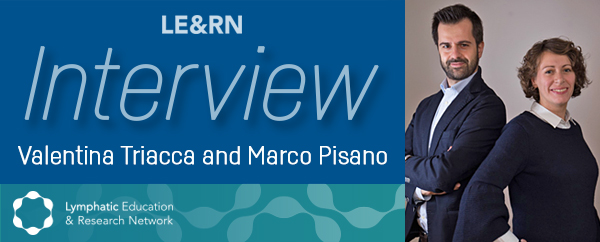Your product LymphoDrain is the first artificial lymphatic vessel. How does it work?
LymphoDrain is designed to bypass the lymphatic injury, and transport the accumulated interstitial fluid from the edematous area to an area of the body where fluids are naturally reabsorbed by the healthy lymphatic and venous system. LymphoDrain is composed of an implantable pump connected to a drainage and output catheter. To minimize the size of the part that’s implanted in the patient’s body, the mechanical system of the pump is external. The passive implant is activated through a wearable device that the patient can use according to their therapeutic needs.
What challenges did you encounter in creating LymphoDrain?
Minimizing the size and weight of both the external and implanted parts has been a key challenge. We hope to make the treatment as discrete and seamless as possible for the patient. Reducing the size of the implanted parts allows for a minimally invasive surgical procedure and limits inflammation of surrounding tissues. Having a small and light external controller allows the patient to wear the device under clothing, making the treatment discrete and less impactful on the patient’s daily activities. The other main challenge is that since LymphoDrain is an implantable medical device, there’s a long path to market due to regulatory requirements and the clinical studies needed to validate the technology. As such, the route to bring our device to patients is expensive, and requires significant financing.
Is LymphoDrain just the beginning for Lymphatica?
We are currently testing LymphoDrain in patients with secondary upper limb lymphedema. However, we already have a version for lower limb lymphedema patients in the pipeline. In the field of lymphedema treatment and monitoring, there is no limit to imagination so, yes, LymphoDrain is just the beginning for Lymphatica.
Valentina, tell us a little about your education and business background and what drew you to the field of lymphatics.
I’m a biomedical engineer. I first discovered the lymphatic system during my Ph.D. studies in biotechnology and bioengineering in the laboratory of Professor Melody Swartz at EPFL. Since then, I’ve been fascinated by this secret “third circulation,” which became visible and tangible quite late compared to the traditional vascular system. And I became even more fascinated by the opportunity to improve the lives of millions of patients suffering from lymphedema worldwide.
Marco, tell us a little about your education and business background and what drew you to the field of lymphatics.
I studied engineering at the Politecnico di Milano. Afterwards, I was offered a 3-month internship at EPFL and, intrigued by this possibility, I moved to Switzerland. At EPFL I was working with Professor Melody Swartz. Thanks to her and many other outstanding colleagues, I realized the huge need for interdisciplinary research concerning the lymphatic system, and I was encouraged to continue working in this field. I obtained my Ph.D. in 2014, working on developing microfluidic in vitro models of the lymphatic vasculature. I have always been motivated by the possibility of translating basic research into real benefits for both patients and society. As such, after my Ph.D. I pursued an entrepreneurial education and career, earning an eMBA from the Quantic Institute of Technology, and by co-founding and directing Lymphatica Medtech.
Do either of you have a personal connection to someone with a lymphatic disease?
Marco: My brother-in-law’s sister suffers from monolateral primary leg lymphedema. I’ve known her since my university days, and I was always astonished by how much this disease was affecting her lifestyle and behavior. From 2015 to 2017 Valentina and I were working at the Lausanne University Hospital with Prof. Lucia Mazzolai. Here we had the opportunity to be in contact with several lymphedema patients, who were very motivating to us to continue with our project.
Lymphatica was awarded a Innosuisse Certificate recently. What is that?
The Innosuisse Certificate is issued by the Swiss Innovation Agency. The agency will mentor a company, analyzing its strategy and execution, setting key milestones, and providing coaching. If remarkable progress has been achieved during the program, Innosuisse issues the certificate and confirms that a start-up is ready for sustainable investments and growth.
What are your hopes and aspirations for Lymphatica?
We embarked on a long journey and our aspiration is to reach the end of the journey by providing patients and therapists with a new treatment opportunity, and by helping lymphedema patients to regain their freedom.
Why did Lymphatica decide to become a sponsor of LE&RN?
We’ve been following LE&RN for about ten years. We’ve watched how the organization has grown, working relentlessly to both fight lymphatic diseases and give a voice to lymphedema patients. LE&RN is a great source of education for us as well. Through its advocacy work, we hear the voices of patients and we follow the most recent updates in lymphedema research. So it was a natural choice to become LE&RN sponsors. We share your values, and it is our way to thank you for all the work done so far, and to support you in the activities to come.
